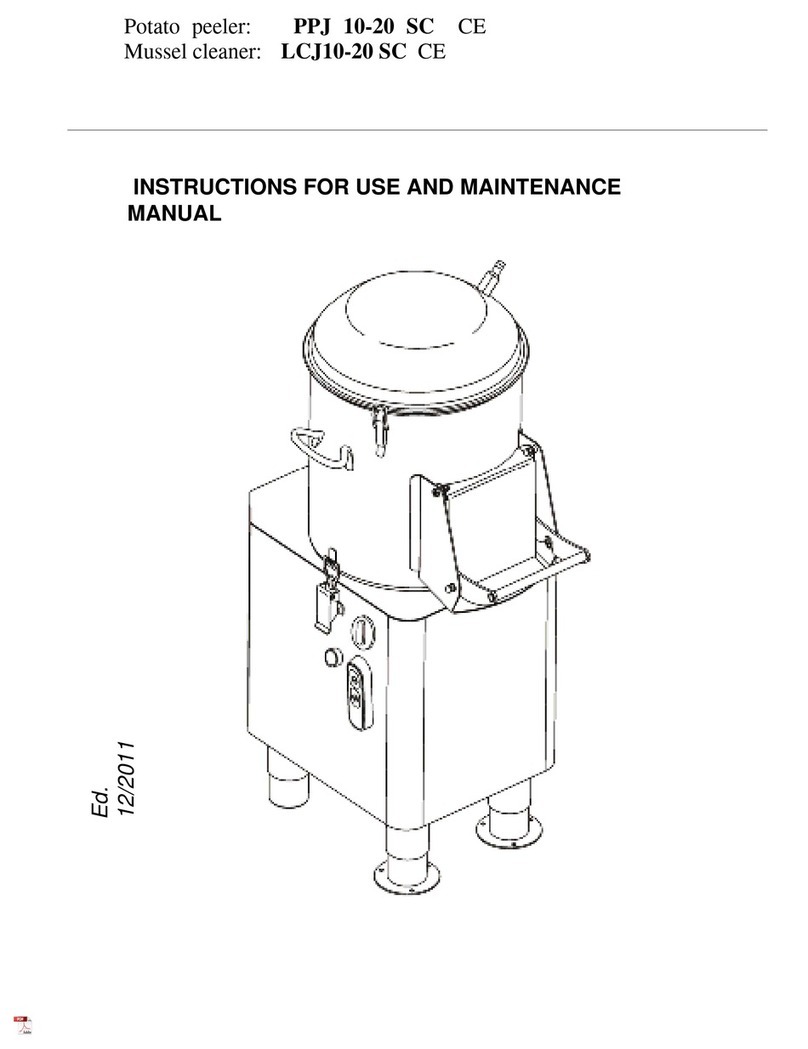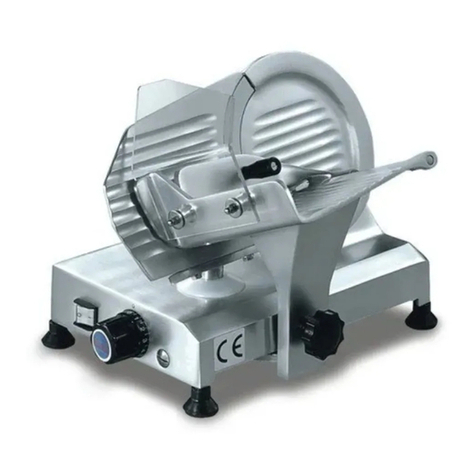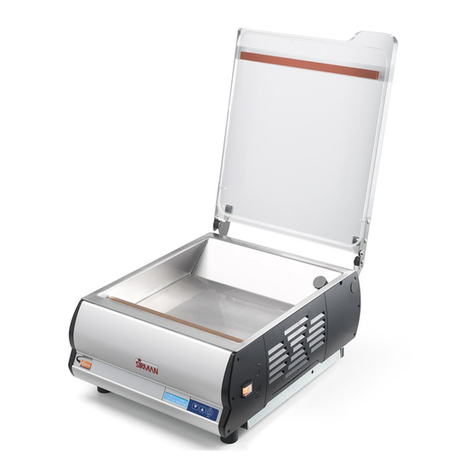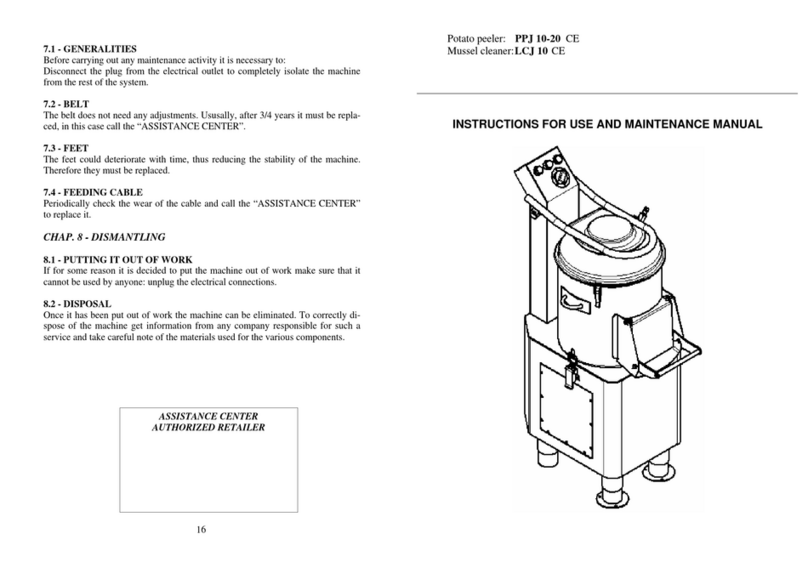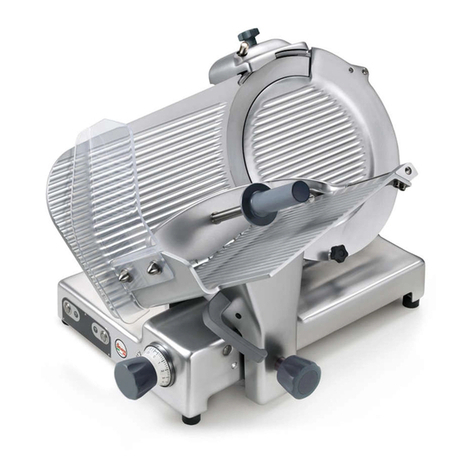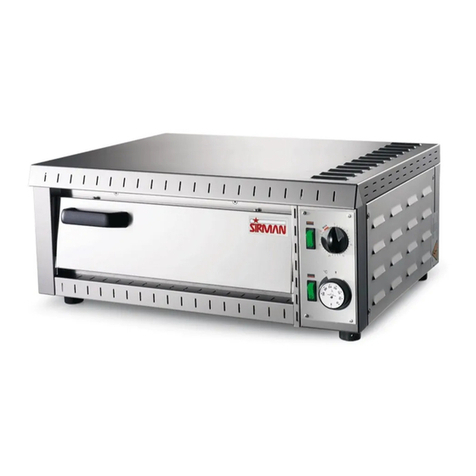
2
FOREWORD
•This manual is meant to provide Customers with information on the machine and its
specifications, and provides all the necessary operating and maintenance instructions in
order to ensure machine performance and longevity.
•This manual must be kept until the machine is disposed of. This manual should be accessible
to all maintenance and operating personnel.
CONTENTS
CHAP. 1 - RECEIVING THE MACHINE page 4
1.1 -PACKAGING
1.2 -PACKAGING UPON DELIVERY
CHAP. 2 - INSTALLATION page 6
2.1 UNPACKING
2.2 POSITIONING
2.3 -ELECTRICAL CONNECTION
2.3.1 - Slicer with single-phase motor
2.3.2 - Slicer with 400 V. three-phase motor
2.3.3 - Slicer with 230 V. three-phase motor
2.3.4 - Blade rotation direction
2.4 - WIRING DIAGRAM
2.5 CONTROL PANEL
2.6 -PRELIMINARY CHECK
CHAP. 3 - INFORMATION ON THE MACHINE page 11
3.1 -GENERAL SAFETY PRECAUTIONS
CHAP. 4 - GETTING FAMILIAR WITH THE SLICER page 13
4.1 CONSTRUCTION FEATURES
4.2 -SAFETY DEVICES INSTALLED ON THE MACHINE
4.2.1 -Mechanical safety
4.2.2 -Electrical safety
4.3 - DESCRIPTION OF THE MACHINE
4.4 - OVERALL DIMENSIONS, WEIGHT, FEATURES….
CHAP. 5 - USING THE MACHINE page 18
5.1 - OPERATIONAL CHECK
5.1.1 - Using the controls
5.2 - LOADING AND CUTTING THE PRODUCT
5.3 -SHARPENING THE BLADE

